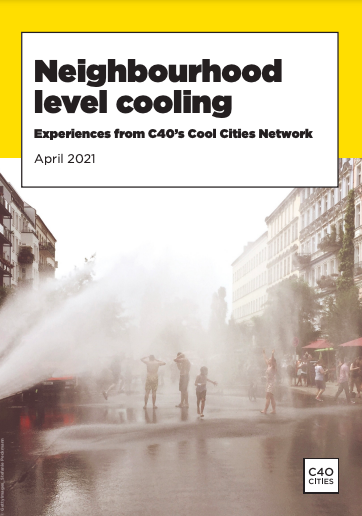Neighbourhood Level Cooling: Experiences from C40’s Cool Cities Network
Organization: C40
Year: 2021

As rising urban temperatures and heat waves increasingly grip cities, neighbourhoods are often impacted differently due to the local urban heat island and social vulnerabilities – every neighbourhood has its own urban form, characteristics and community needs. Cooling solutions therefore need to be adapted to local contexts too. This report sets out ways that cities can understand and monitor local urban heat island effects, and involve local people in implementing cooling solutions. It draws from the experience of nine cities in the C40 Cool Cities Network – Austin, Buenos Aires, Lisbon, Los Angeles, Melbourne, Milan, Philadelphia, Quito and Tel Aviv.
The report sets out cities’ experiences in three areas, and recommendations which include:
- Analysing the urban micro-climate at the local level. Buenos Aires stresses the importance of characterising heat and the urban heat island in informal settlements, which are home to vulnerable populations; Tel Aviv highlights the need to map urban trees precisely for shade mapping and tree planting programmes.
- Involving the local community to identify cooling needs and solutions. Quito recommends undertaking a co-benefits analysis to build support from citizens and institutions.
- Implementing local-level cooling activities. Los Angeles suggests selecting neighbourhoods by mapping multiple data sets including heat islands, underserved communities and transit dependent households; Austin suggests starting early to integrate district cooling systems into planned developments.